Results 9,711 to 9,720 of 12096
Thread: Anandtech News
-
07-25-19, 10:59 AM #9711
Anandtech: EKWB EK-FC GV100 Pro: A Water Block for Quadro GV100, Tesla V100, Titan V
Being one of the world’s leading suppliers of components for custom liquid cooling systems, EK Water Blocks on occasion release some rather exotic products. This week the company launched the new EK-FC GV100 Pro, its 2nd Generation water block for cards based on NVIDIA’s GV100 graphics processor. The product features design elements that could eventually be adopted on other water blocks form EKWB, but which are for now reserved to the newly announced ‘Water Block for Professionals’.
The EK-FC GV100 Pro water block is comprised of a cold plate made of nickel-plated electrolytic copper as well as a top cover made of industry grade stainless steel, and are both sealed together using EPDM O-rings. The cold plate covers the entire surface of NVIDIA GV100-based cards and thus cools down the GPU and memory package as well as multi-phase VRM. The key difference between the new unit and its predecessor is that it uses Open Split-Flow design with a low hydraulic flow restriction as opposed to Inlet Split-Flow design. Besides, the stainless steel top now features an I/O bracket that replaces the stock one, which promises to add more sturdiness to the assembly (a first for EKWB).
Additionally, the device also comes with a backplate to enable passive cooling of components as well as add rigidity to the card. It is noteworthy that when installed, the EK-FC GV100 Pro retains compatibility with NVLink bridges.
As is traditional for EKWB, its water blocks use regular G ¼ inch barbs for tubing (with brass standoffs pre-installed) that are compatible with a wide range of custom liquid cooling systems.
Being designed for NVIDIA’s Titan V, Tesla V100, and Quadro GV100 graphics card that are not exactly aimed at gamers or mainstream enthusiasts, the EK-FC GV100 Pro water block does not feature any transparent or RGB-enabled options.
EKWB has already begun to take pre-orders on the EK-FC GV100 Pro water block as well as the backplate and will ship the products in two to four weeks’ time. Since we are talking about a professional-grade product, it is more expensive than EKWB’s regular units: the water block is priced at €249.9, whereas the backplate costs €47.9, with VAT included.
Related Reading:
- EKWB Releases Full Cover GPU Water Block for Titan V
- EKWB Announces EK-Vector RTX Water Blocks for GeForce RTX 2080 & RTX 2080 Ti
- EK Water Blocks Unveils EK-Vector for AMD Navi Graphics Cards
- EKWB EK-Velocity sTR4: EK’s 3rd Gen Water Block for AMD’s Threadripper
- EKWB Water Blocks (CPU and VRM) for the ASUS ROG Dominus Extreme
Source: EKWB
More...
-
07-25-19, 10:59 AM #9712
Anandtech: Phisonís Next-Gen eSSD Controllers to Support Everspinís STT-MRAM Caching
Phison and Everspin on Wednesday said that the former's upcoming controllers for enterprise-grade SSDs would natively support the latter’s spin torque transfer MRAM (STT-MRAM) that will be used as a write buffer to enable a more effective I/O management. The new technology will allow makers of SSDs to improve I/O performance of their drives and enable power loss protection without usage of supercapacitors.
The upcoming eSSD controllers from Phison will support Everspin’s 1 Gb STT-MRAM memory “to increase the reliability and performance” of next-gen server-grade SSDs. In particular, the companies say that STT-MRAM chips will enable SSD makers to more effectively manage I/O streams, which will enable for better latency determinism and therefore improve QoS. Besides, since STT-MRAM is nonvolatile, drives that will use it instead of traditional DRAM buffers will not need a sophisticated power loss protection enabled by supercapacitors, which will simplify their physical architecture and will enable to increase their capacity by adding more 3D NAND packages.
As far as performance of STT-MRAM-enabled SSDs is concerned, the buffer and appropriate software can lower overall latency and increase random performance of drives significantly versus typical SSDs. It is of course too early to say anything about SSDs based on next-generation controllers from Phison, but the partnership between the two companies promises to bring significant performance enhancements to upcoming storage subsystems.
Phison’s SSD partners won't the first to use STT-MRAM as write cache buffers for 3D NAND-based SSDs. Both IBM and Seagate already offer appropriate drives commercially today. Meanwhile, native support of STT-MRAM by SSD controllers will make it considerably cheaper and easier for drive makers to build such products.
Phison and Everspin will discuss use cases of STT-MRAM in enterprise storage applications at Flash Memory Summit in early August.
Related Reading:
- Everspin Begins Production of 1Gb STT-MRAM
- IBM And Everspin Announce 19TB NVMe SSD With MRAM Write Cache
- Seagate Demos New SSD Features And Prototypes At FMS
- Everspin Announces New MRAM Products And Partnerships
Source: Phison
More...
-
07-25-19, 07:25 PM #9713
Anandtech: Apple to Buy Bulk of Intelís Smartphone Modem Business For $1 Billion
Intel's struggling smartphone modem business has finally found a suitor. This afternoon the company announced in conjunction with Apple that the tech company – and one of Intel's most important customers – would be buying the bulk of Intel's smartphone modem business for a cool $1 billion.
Announced via joint press release from Apple and Intel, the two companies have announced that they have signed an agreement for Apple to buy the majority (but not the entirety) of Intel's smartphone modem business. Under the terms of the agreement, Apple will get Intel’s modem IP, related product teams, equipment, and property leases. Importantly, however, the deal only covers smartphone modems; Intel retains some of the critical IP and the option to build modems for non-smartphone uses such as PCs, IoT applications, and autonomous vehicles. This also includes the infrastructure business, where Intel will continue to build 5G solutions for network operations and other large customers.
As per the deal, Apple will pay Intel $1 billion in cash for the smartphone business, and the two companies expect the deal to close in the fourth quarter. For its money, Apple will be picking up around 2,200 Intel employees, as well as Intel’s patents related to smartphone modems (including 2G, 3G, 4G, and 5G modems), with Apple now set to hold over 17,000 wireless technology patents once the deal closes. Among other things, Apple now owns IP related to protocols of cellular networks, modem architecture, and modem operation. In fact, some of the IP that Apple is buying was originally developed by Infineon's wireless division (Apple's original modem supplier) over a decade ago.
The purchase of Intel's smartphone modem IP as well as transfer of employees is a very strong indicator that Apple is planning to develop its own modems going forward. To date, the company has remained one of the last users of discrete modems; virtually every other SoC supplier is integrating modems directly into their designs these days, and it stands to reason that Apple will want to go the same direction. While integrated modems do increase SoC development costs and complexity, ditching the stand-alone chip reduces the amount of total board space required for a phone, as well as reducing the amount of power needed to sling data around, two things that Apple has shown to appreciate as they have continued to push the envelope on thinner and lighter phones.
What remains to be seen, however, is how this purchase impacts Apple's chipset supply deal with Qualcomm. When signed earlier this year, the two companies inked a “multiyear” chipset supply agreement, with no further details on what that agreement entails. Chip supply agreements normally bind a customer to buying a certain number of chips in exchange for a guaranteed supply and favorable pricing, so the big question is whether Apple is indeed already committed to buying Qualcomm modems, and if so, for how long. It will take Apple a fair bit of time to produce a modem from their new Intel IP – given Intel's issues, we're not expecting Apple to just start building existing Intel designs – so it will be interesting to see when Apple can actually make that transition on both the technical and contractual sides of matters.
Ultimately, between the earlier Qualcomm licensing deal and today's acquisition of Intel's smartphone modem business, Apple seems to be fully in control of its own destiny as far as modems go; the company now has both IP and personnel it needs to transition away from Qualcomm's modems and use its own designs. Furthermore, the comprehensive wireless IP portfolio will make Apple’s position stronger in any potential patent dispute, should one emerge.
As for Intel, while this deal gets them out of the high-profile smartphone modem business once and for all, Intel won't be leaving the modem businesses completely. Intel has retained the option to continue to work on next-gen 5G infrastructure for network operators, telecommunications equipment makers, and cloud service providers. The company also retains critical IP and modem technology and can builds 5G modems for PCs, IoT devices, and autonomous vehicles. If Intel finds that its PC platforms need a 5G modem, it can equip them with an in-house solution – assuming of course that it makes financial sense. At this point however, it's important to note that Intel isn't announcing anything specific regarding future non-smartphone modems; the company is only saying that it has retained the rights to make those modems if it desires.
Closing out Intel's near decade in the smartphone modem business, the group, which the company bought from Infineon back in 2011, was ultimately never as successful as it was in the 2G/3G era. In the 4G era the only big customer that Intel ever landed was Apple, who is a very big customer indeed, but on the bubble at being large enough to sustain a modem development operation like Intel's. And with Intel struggling to get 5G modems out, Intel wasn't able to retain Apple as a customer going into the 5G era. As a result, selling off the business while retaining options to develop modems for next-generation devices would seem to be the most sensible option available to Intel.
Official Statements
Bob Swan, CEO of Intel, made the following statement:
“This agreement enables us to focus on developing technology for the 5G network while retaining critical intellectual property and modem technology that our team has created. We have long respected Apple and we’re confident they provide the right environment for this talented team and these important assets moving forward. We’re looking forward to putting our full effort into 5G where it most closely aligns with the needs of our global customer base, including network operators, telecommunications equipment manufacturers and cloud service providers.”Johny Srouji, Apple’s senior vice president of Hardware Technologies, made the following statement:
“We’ve worked with Intel for many years and know this team shares Apple’s passion for designing technologies that deliver the world’s best experiences for our users. Apple is excited to have so many excellent engineers join our growing cellular technologies group, and know they’ll thrive in Apple’s creative and dynamic environment. They, together with our significant acquisition of innovative IP, will help expedite our development on future products and allow Apple to further differentiate moving forward."Related Reading:
- Intel Exits 5G Smartphone Modem Market; Other Client Modem Businesses to Be Reviewed
- Sizing Up The 5G Modem Market: Qualcomm, Intel, Huawei, Samsung, UniSOC, and Mediatek
Source: Apple/Intel
More...
-
07-25-19, 11:41 PM #9714
Anandtech: Intel Q2 FY 2019 Earnings Report: Datacenter Drop
Intel announced their earnings for the second quarter of their 2019 fiscal year. Overall, revenue dropped 3% year-over-year to $16.5 billion, with gross margins still below the 60% that Intel likes to maintain, but at 59.8%, the are improved significantly over last quarter’s 56.6%. Operating income for the quarter was down 12% to $4.6 billion, and net income down 17% to $4.2 billion. This resulted in earnings-per-share of $0.92, down 12% from a year ago.
Over the last couple of years, it’s been the datacenter group that has been the sharp end of Intel’s growth, and it’s now the datacenter group that took the brunt of the slowdown. In fact, the PC-centric group at Intel managed to keep revenue more or less flat compared to last year, up 1% from Q2 2018, with $8.8 billion in revenue. Intel has seen high sales in their higher performance, and therefore higher margin, products, as well as customers purchasing ahead of possible tariffs. Intel also has finally started shipping 10 nm products in volume with expectations of holiday 2019 sales. The Client Computing Group had operating income of $3.7 billion this quarter, up from $3.2 billion a year ago, so despite Intel not executing on 10 nm as expected, they are still quite strong in the PC space even as competition has ramped up.Intel Q2 2019 Financial Results (GAAP) Q2'2019 Q1'2019 Q2'2018 Revenue $16.5B $16.1B $17.0B Operating Income $4.6B $4.2B $5.3B Net Income $4.2B $4.0B $5.0B Gross Margin 59.8% 56.6% 60.6% Client Computing Group Revenue $8.8B +2% +1% Data Center Group Revenue $5.0B +2% -10% Internet of Things Revenue $986M +8% +12% Mobileye Revenue $201M -4% +16% Non-Volatile Memory Solutions Group $940M +3% -13% Programmable Solutions Group $489M +1% -5%
Intel’s Datacenter group experienced a revenue drop of 10%, with $5.0 billion in revenue for Q2. The biggest single drop was enterprise and government revenue, which was down 31%, but cloud also declined, although only 1% compared to last year, and the communications service provider segment was up 3%, offsetting some of the drops. Operating income for the Datacenter group was down more significantly though. Operating income was $1.8 billion, down 34% from a year ago.
Intel’s Internet of Things continues its rise, almost hitting the $1 billion/quarter threshold, and achieved a record quarterly revenue for Q2 with $986 million in revenue. This was up 12% from a year ago, with increased demand for higher performance processors driving the revenue gain. Operating income was up $51 million to $294 million as well. Mobileye revenue was up 16% to $201 million with an operating income of $53 million, up 20.4%.
Intel’s NAND group had revenue of $940 million in the quarter, down 13% due to “challenging pricing” and Intel continues to lose money on their NAND group, with an operating loss of $284 million this quarter, compared to a $65 million loss last year.
Finally, Programable solutions had revenue of $489 million, down 5% from last year with no explanation given. This group saw its operating income slashed almost in half compared to last year, coming in at $52 million for the quarter compared to $101 million a year ago.
Collectively, Intel’s PC group was up 1% and its Datacenter products were down 7%. Intel saw a 2% drop in notebook processor volumes, but average selling price was up 3%. Desktop processor volumes were down 11% compared to Q2 2018, but average selling price was up 5%. On the datacenter side, unit volumes were down 12% compared to Q2 2018, and average selling price was only up 2%.
Looking ahead to Q3, Intel is expecting revenues of around $18.0 billion, with earnings-per-share of about $1.16.
Source: Intel Investor Relations
More...
-
07-26-19, 10:27 AM #9715
Anandtech: LG Display & SK Hynix Looking to Diversify Industiral Suppliers as Row wit
South Korean electronics companies reaffirmed this week that production of computer memory and displays could be disrupted because of ongoing trade dispute between the country and Japan. Both SK Hynix and LG Display said that they were looking towards expanding the network of suppliers they use in acquiring three crucial materials required for product manufacturing.
Having started on July 4, Japanese producers must now get approval for individual exports of polyimides (used both for LCDs and OLEDs), photoresists, and high-purity hydrogen fluoride (used to make chips, such as LSI, DRAM and NAND devices) to South Korea. These export reviews may take up to three months, whereas South Korean producers usually only keep one to two months' worth of materials in stock because they are highly toxic and uneasy to store. Meanwhile, Japanese companies — JSR, Showa Denko (SDK), and Shin-Etsu Chemical — control 70% - 90% of the global supply of these chemicals, and if they cannot supply materials to their South Korean partners on time, production of 3D NAND, DRAM, LCDs, and OLEDs at LG, Samsung, and SK Hynix will be disrupted.
Polyimides, photoresists, and high-purity hydrogen fluoride are produced not only in Japan, but also in South Korea as well. However ramping up local production on short notice to satisfy the demand from the South Korean giants is pretty hard. Meanwhile, both LG Display and SK Hynix are looking towards other vendors simply because they have no other choice.
Speaking about the matter yesterday to investors and financial analysts, Jin-Seok Cha, the executive vice president and head of finance and procurement at SK Hynix, stated:
“We are trying to secure inventories of chip materials as much as possible ... but we cannot rule out production disruption if Japanese export controls drag on, so we are keeping a close eye on that.”Executives from LG Display also confirmed earlier this week that the company intended to procure required chemicals from different suppliers
Switching suppliers of chemicals is an uneasy task, and it is also hard for producers to ramp up production quickly. Considering the vast production capacities that the South Korean chaebols run in the country and their requirements for supplies, it remains to be seen whether they can get enough to keep their plants running at full capacity.
Earlier this week South Korea failed to gain support from the World Trade Organization in its dispute with Japan. The latter plans to remove South Korea from the 'white list' of countries that have minimum trade restrictions, which will make life of Korean manufacturers even harder.
Related Reading:
- Supply of DRAM, NAND & Displays Could Be Disrupted by Japan & South Korea Dispute
- Samsung Samples 32 Gb DDR4 Memory Chips
- SK Hynix to Start Using 2nd Gen 10nm-class DRAM Process Technology in 2H 2019
- Samsung Develops Smaller DDR4 Dies Using 3rd Gen 10nm-Class Process Tech
- Micron’s DRAM Update: More Capacity, Four More 10nm-Class Nodes, EUV, 64 GB DIMMs
Sources: Reuters, Reuters
More...
-
07-26-19, 10:27 AM #9716
Anandtech: Corsair: Origin PC Execs Remain, No Plans to Make Own Graphics Cards, Moth
Earlier this week Corsair took over Origin PC for an undisclosed sum, entering the league of boutique computer makers and significantly transforming itself as a company. As it usually happens in such cases, the acquisition brought a lot of questions about the future of both brands and today we have answers courtesy of Corsair’s reps.
The acquisition of Origin PC substantially amplifies Corsair’s system business beyond its Vengeance and Corsair One systems, both in terms of new models as well as in terms of dollar sales. Being a private company, Corsair does not disclose its PC revenue, but the company confirmed in the past that its system business was a success in general. In a bid to increase sales of Origin PCs, Corsair intends to explore ways to sell Origin PC-branded products through its retail and online partners in North America. Unfortunately for those in Asia and Europe, there are currently no plans to sell or market Origin PC products outside of North America. Obviously, one can still buy them in the USA and have them delivered elsewhere, but this is going to be more expensive.
The boutique PC business is different from making standard PCs (although Corsair’s machines are not exactly standard) in many ways, so Origin PC will remain a separate brand within Corsair. An important thing here is that the Origin PC management team (headed by Kevin Wasielewski, CEO) will be remain in their roles, reporting to the Corsair C-level executive team.
When it comes to product lineups, Origin PC’s product family will remain. However the internal components will start to shift to include more Corsair’s components, including memory, coolers, PSUs, and so on. Already today, many of Origin PC's builds come with peripherals from Corair and in the near future these machines will start using Corsair’s Hydro X-series custom liquid cooling hardware and will integrate Corsair’s iCue software for lighting synchronization and performance monitoring.
The combined system business of Corsair and Origin PC will require a higher volume of components, which would justify development of more hardware in-house. However, Corsair at this point has no plans to design its own graphics cards or motherboards, with Corsair's representative saying the following:
“While Origin PC certainly needs large quantities of graphics cards and motherboards, we have no plans to expand into those product categories at this time and both Corsair and Origin are well served by our current motherboard and GPU partners.”Overall, Corsair certainly has a strategy for itself and Origin PC going forward. But there certainly seems to a bit of playing things by ear for Corsair, as they are going to need to continually tweak their approach to stay in tune with market demands.
Related Reading:
- Corsair Acquires Origin PC
- Corsair Takes Over Gaming, Video Capture, & Docking Assets from Elgato
- EagleTree and Partners Acquire Majority Stake in Corsair for $525 Million
Sources: Corsair
More...
-
07-26-19, 12:35 PM #9717
Anandtech: Team Groupís T-Force Cardea Liquid: A Liquid-Cooled M.2 SSD
With liquid cooling options already available for most PC components, it was only a matter of time until someone did it for PC storage as well. And now that point has come, thanks to Team Group and its T-Force Cardea Liquid M.2 PCIe Gaming SSD.
True to its name, the T-Force Cardea Liquid M.2 PCIe Gaming SSD is an M.2 SSD relying on water cooling to keep its temperature in check. And while it's not a looped cooling device – despite using liquid cooling, it's still a stand-alone, closed device that doesn't get plugged in to an open loop system – it's none the less a novel step in developing more exotic SSD cooling systems. Using their liquid cooling module, Team Group says that their cooling system will reduce temperature of the drive by 10ºC when compared to a SSD without a heat sink.
The cooling system of the T-Force Cardea Liquid is relatively simple. The liquid cooling module relies on the self-circulation effect by separating the water block into two chambers. When the coolant in the chamber above the controller/memory gets hot, it flows to the second chamber to cool down. Essentially, the aluminum water block acts like a vapor chamber, but uses a mainstream coolant instead of a specialized low boiling point liquid. This kind of cooler is cheap to make, and since it is shipped without any water inside (it's designed to be filled by the end user), there is no risk of leakage during shipping. Because it's still a closed cooling system, the SSD and its cooling module still requires a good airflow inside the PC case to pull heat away and out of the system, but using a liquid to cool down a high-end SSD is certainly an innovative method.
Set to be available in 256 GB, 512 GB, and 1 TB versions, the T-Force Cardea Liquid is compatible with any desktop PC featuring an M.2-2280 slot supporting a PCIe 3.0 x4 interface. With that said, the the drive is far taller than normal SSDs at 14.1 mm high, so one has to make sure there is enough space around it to fit.
The liquid-cooled SSD from Team Group is based on Phison's PS5012-E12 controller as well as 3D TLC NAND from an undisclosed manufacturer. When it comes to performance, the top-of-the-range 1 TB model of the T-Force Cardea Liquid will offer up to 3400 MB/s sequential read speed, up to 3000 MB/s sequential write speed (when pSLC caching works), up to 450K IOPS random read speed, and up to 400K IOPS random write speed. Since this is a consumer SSD, we are talking about peak numbers here.
Team Group will start selling its T-Force Cardea Liquid drives in the near future. Pricing is something that remains to be seen, but keep in mind that this is a high-end SSD family.Team Group T-Force Cardea Liquid M.2 PCIe SSD Specifications Capacity 256 GB 512 GB 1 TB Model Number TM8FP5256G0C119 TM8FP5512G0C119 TM8FP5001T0C119 Controller Phison PS5012-E12 NAND Flash 3D TLC NAND Form-Factor, Interface M.2-2280, PCIe 3.0 x4, NVMe 1.3 Sequential Read 3000 MB/s 3400 MB/s Sequential Write 100 MB/s 2000 MB/s 3000 MB/s Random Read IOPS 200K IOPS 350K IOPS 450K IOPS Random Write IOPS 200K IOPS 300K IOPS 400K IOPS Pseudo-SLC Caching Supported DRAM Buffer ? TCG Opal Encryption No Power Management ? Warranty 3 years MTBF 2,000,000 hours TBW >380 TB >800 TB >1665 TB Additional Information Link MSRP ? ? ?
Related Reading:
- Alphacool Releases Two New SSD Coolers: Passive HDX-2 and Watercooled HDX-3
- The Team Group MP34 512GB SSD Review: Refining Phison's NVMe Workhorse
- ADATA Announces XPG Storm: A Cooler for M.2 SSDs with a 16500 RPM Fan
- CES 2019: TeamGroup And ASRock Release Phantom Gaming Branded Memory and SSD
- EKWB Launches Aftermarket EK-M.2 Aluminum Heatsink for M.2 SSDs
Source: Team Group
More...
-
07-26-19, 02:43 PM #9718
Anandtech: SK Hynix NAND Update: 3D NAND Output Cut, Slowdown Capacity Expansions
SK Hynix said that it would cut wafer starts of 3D NAND in the coming months more aggressively than it originally anticipated earlier this year. Besides, the company will reconsider plans to equip its M15 and M16 fabs, which will reduce its capital expenditures.
Oversupply of 3D NAND memory encourages makers of flash to reduce their output in a bid to stabilize prices. Earlier this year SK Hynix said that it would reduce 3D NAND wafer starts by 10% in 2019, but this week it said it had changed its plans and now intends to reduce wafer starts by 15% when compared to its 2018 output.
In Q2 2019, SK Hynix’s NAND flash bit shipments increased by a whopping 40% quarter-over-quarter as the company ramped up production of 72-layer 3D NAND and because overall increased demand following a traditionally slow first quarter. Meanwhile, average selling prices of 3D NAND dropped by 25%, which is reason for concern for SK Hynix.
As SK Hynix (and other makers of NAND flash) transitions to more advanced 3D NAND designs with more layers (or more bits per cell in case of 3D QLC) and higher bit density, they increase their bit output, which to some degree create oversupply. As a result, cutting output of (usually previous-generation) wafers by 10% to 15% may not be enough to reduce bit output.
SK Hynix currently produces 72-layer 3D NAND for datacenter and mainstream SSDs. The company’s 512 Gb 96-layer 3D TLC NAND entered production last November and the company intends to increase production of 96-layer 3D NAND shortly. In addition, SK Hynix recently started to ramp up production of 1 Tb ‘4D’ TLC NAND featuring the company’s charge trap flash (CTF) design featuring the peripheral under cells (PUC) architecture. These memory devices promise to significantly improve bit density over currently shipping 3D NAND, and further increase SK Hynix’s 3D NAND bit output.
In addition to reduction of 3D NAND wafer starts, SK Hynix will also slow down expansion of cleanroom space at its M15 fab near Cheongju, South Korea, which can produce both DRAM and 3D NAND. In addition, it will also delay installation of equipment at its M16 fab near Icheon. While SK Hynix does not elaborate, it says that the decision would lower its 2020 CapEx “significantly” when compared to 2019, which may mean that new production capacities at the said plants may not come online next year.
Related Reading:
- Supply of DRAM, NAND & Displays Could Be Disrupted by Japan & South Korea Dispute
- Boom to Bust: Memory Makers Plan to Cut NAND Flash Production
- SK Hynix Set to Build a New Memory Fab
- SK Hynix to Build a New NAND Fab, Upgrade Existing DRAM Fab
- SK Hynix Begins Sampling of 96-Layer 1 Tb 3D QLC NAND
- SK Hynix Starts Production of 128-Layer 4D NAND, 176-Layer Being Developed
Source: SK Hynix
More...
-
07-26-19, 05:13 PM #9719
Anandtech: Intel Begins Commercial Shipments of 10nm Ice Lake CPUs to OEMs
Intel has begun shipments of its 10th generation Core "Ice Lake" processors as of the second quarter, according to the company in an earnings call this week. Made using Intel’s 10nm process technology, these laptop CPUs were qualified by OEMs earlier in 2019 and are on track to reach the market inside mobile PCs by the holiday season.
As reported, Intel began to produce Ice Lake processors in the first quarter in a bid to build up inventory to support a high-volume launch in the second half of the year. The processors passed qualification by PC makers in Q1 – Q2, and then Intel started to ship them for revenue later in the quarter, which was a little bit earlier than anticipated by various market observers. Keeping in mind the lead-time required to get assembled PCs on to store shelves, Ice Lake-powered PCs are well on track to hit the market in Q4 with some machines possibly reaching retailers earlier than that.
Bob Swan, CEO of Intel, stated the following:
- “We began shipping Ice Lake client [CPUs] in the second quarter supporting systems on the shelf for the holiday selling season.”
Intel formally introduced its laptop-focused Ice Lake-U and Ice Lake-Y CPUs, which are based on the Sunny Cove microarchitecture, in late May. Officially called ‘Intel 10th Generation Core’ processors, the family includes 11 chips (ranging from Core i3 to Core i7) featuring two or four general-purpose CPU cores as well as various GPU configurations and coming to market with 9W, 15W, and 28W TDP variants.
On the CPU side of things, Intel promises an average 18% raw clock-for-clock performance uplift compared to the Skylake core released in 2016 (which has been used with small tweaks since then) along with VNNI and Cryptographic ISA instructions. On the GPU side of matters, Ice Lake CPUs will integrate Intel’s Gen11 graphics core with up to 64 execution units, with Intel promising significant performance improvements as well. The updated iGPU will also natively support DisplayPort 1.4 and HDMI 2.0b outputs as well as HDCP 2.2 technology.
As is traditional for Intel’s lower-power mobile parts, the new Ice Lake processors will come with on-package chipsets. The new 300-series chipsets for ICL will natively support Thunderbolt 3, Wi-Fi 6 MAC (RF module will be sold separately), PCIe 3.0, and other features.
Overall, Intel’s road to high-volume production of 10nm CPUs has been long and bumpy; but it looks like the company is finally turning a corner in time for their Q4 launch.
Related Reading:
- Intel Unveils 10th Gen Core Ice Lake-U & Ice Lake-Y Mobile CPUs: 10nm Sunny Cove Later This Year
- Intel Starts Qualification of Ice Lake CPUs, Raises 10nm Volume Expectation for 2019
- Intel Teases Ice Lake-U Integrated Graphics Performance
Source: Intel
More...
-
07-29-19, 10:54 AM #9720
Anandtech: NVIDIA @ SIGGRAPH 2019: NV to Enable 30-bit OpenGL Support on GeForce/Tita
Kicking off this week is SIGGRAPH, the annual North American professional graphics pow-wow that sees everyone from researchers to hardware vendors come together to show off new ideas and new products. Last year’s show ended up being particularly important, as NVIDIA used the show as a backdrop for the announcement of their Turing graphics architecture. This year’s NVIDIA presence is going to be far more low-key – NVIDIA doesn’t have any new hardware this time – but the company is still at the show with some announcements.
Diving right into matters then, this year NVIDIA has an announcement that all professional and prosumer users will want to take note of. At long last, NVIDIA is dropping the requirement to use a Quadro card to get 30-bit (10bpc) color support on OpenGL applications; the company will finally be extending that feature to GeForce and Titan cards as well.
Dubbed their Studio Driver: SIGGRAPH Edition, NVIDIA’s latest driver will eliminate the artificial restriction that prevented OpenGL applications from drawing in 30-bit color. For essentially all of the company’s existence, NVIDIA has restricted this feature to their professional visualization Quadro cards in order to create a larger degree of product segmentation between the two product families. With OpenGL (still) widely used for professional content creation applications, this restriction didn’t prevent applications like Photoshop from running on GeForce cards, but it kept true professional users from using it with the full, banding-free precision that the program (and their monitors) were capable of. So for the better part of 20 years, it has been one of the most important practical reasons to get a Quadro card over a GeForce card, as while it’s possible to use 30-bit color elsewhere (e.g. DirectX), it was held back in a very specific scenario that impacted content creators.
But with this latest Studio Driver, that’s going away. NVIDIA’s Studio drivers, which can be installed on any GeForce/Titan card, desktop and mobile, will no longer come with this 30-bit restriction. It will be possible to use 30-bit color anywhere that the application supports it, including OpenGL applications.
To be honest, this wasn’t a restriction I was expecting NVIDIA to lift any time soon. Rival AMD has offered unrestricted 30-bit color support for ages, and it has never caused NVIDIA to flinch. NVIDIA’s official rationale for all of this feels kind of thin – it was a commonly requested feature since the launch of the Studio drivers, so they decided to enable it – but as their official press release notes, working with HDR material pretty much requires 30-bit color; so it’s seemingly no longer a feature NVIDIA can justify restricting from Quadro cards. Still, I suppose one shouldn’t look a gift horse too closely in the mouth.
Otherwise, at this point I’m not clear on whether this is going to remain limited to the Studio drivers, or will come to the regular “game ready” GeForce drivers as well. Keeping in mind that both drivers are essentially identical software stacks – the difference being their testing and release cadences – there’s no reason to think it won’t show up in future GeForce drivers as well. But for now, it’s only being mentioned in the Studio drivers.
Meanwhile, the latest Studio driver release, true to its purpose, will also include updated support for several applications, including Cinema 4D and Blender. So while the 30-bit color announcement is likely to overshadow everything else, NVIDIA is continuing to iterate on their software support as previously promised.
New RTX Studio Laptops & RTX-Supporting ProViz Software
Along with their latest Studio drivers, NVIDIA is also using the show to announce their partners latest hardware and software developments.
On the hardware side of matters, another 10 Studio laptops are being announced. The NVIDIA branding program, first launched at Computex earlier this year, set about establishing a minimum standards program for participating laptops. In short, the laptops need to include a 45W Core i7 and a GeForce RTX 2060/Quadro 3000 or better, along with a calibrated display. The latest hardware release cycle will see new laptops from Lenovo, HP, Dell, and Boxx, and will bring the Studio program to 27 laptops in total.
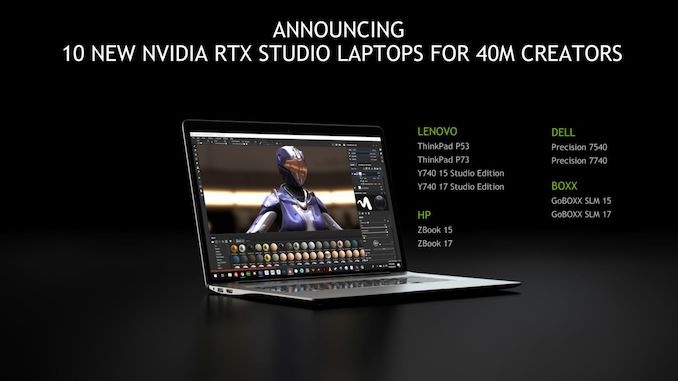
Meanwhile on the software side of matters, NVIDIA is celebrating the adoption of their RTX technology, as well as the additional applications that are adding support for it. According to the company, 40 professional visualization applications already support RTX in some form, with more to come. At this year’s show in particular, Adobe, Autodesk, Daz, and Blender are all showing off new software versions/updates that add support, typically for hardware ray tracing. NVIDIA sees RTX as an important product differentiator for the company, especially as it seems AMD won’t have comparable technology for at least another year, so it’s something the company has continued to invest in and is happy to tout that advantage.
More...
Thread Information
Users Browsing this Thread
There are currently 49 users browsing this thread. (0 members and 49 guests)




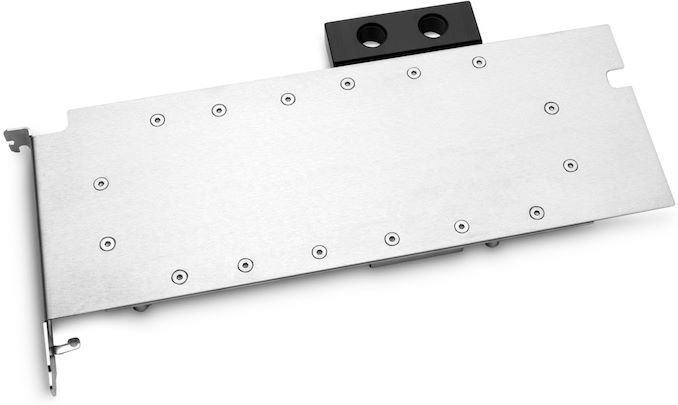
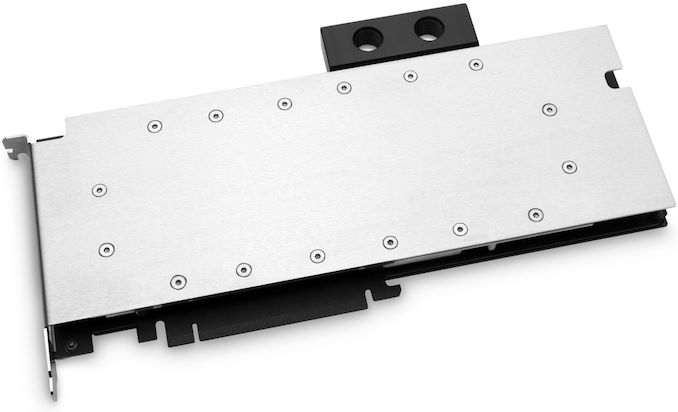
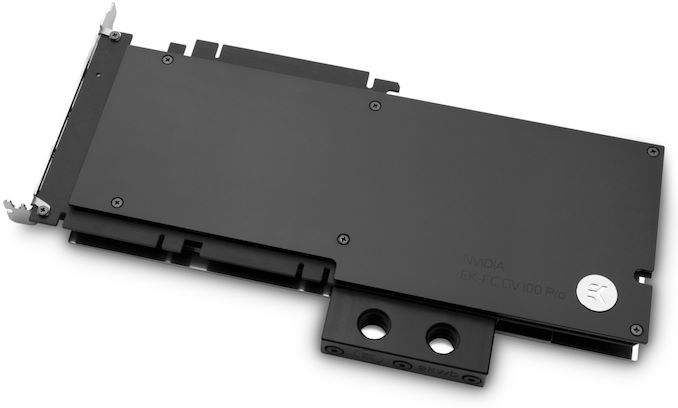
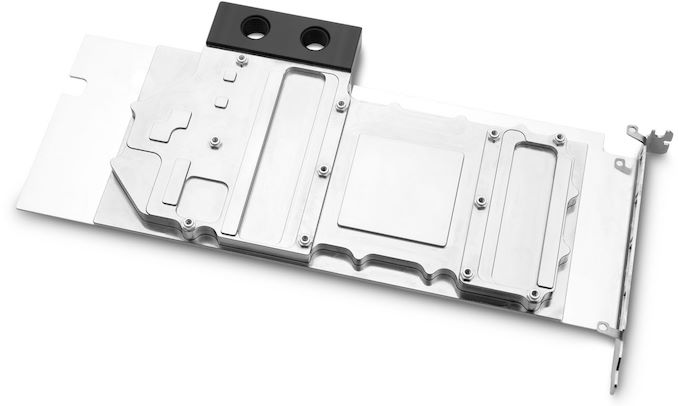

 Quote
Quote
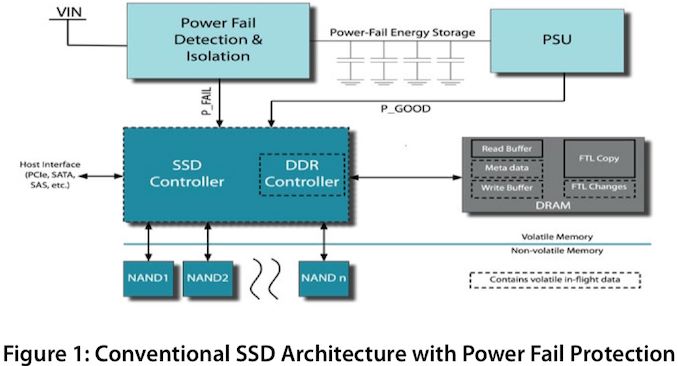
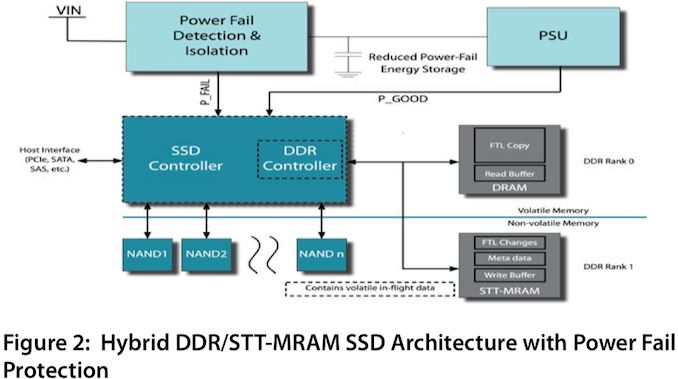
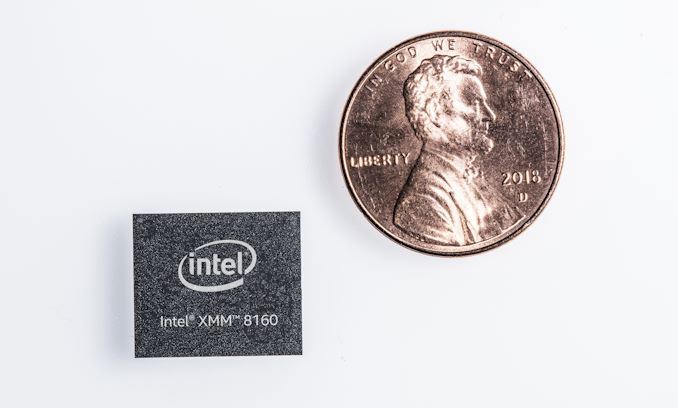

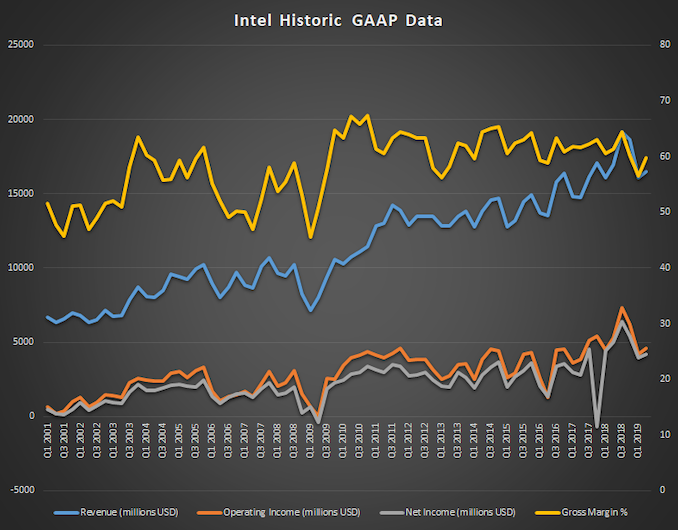
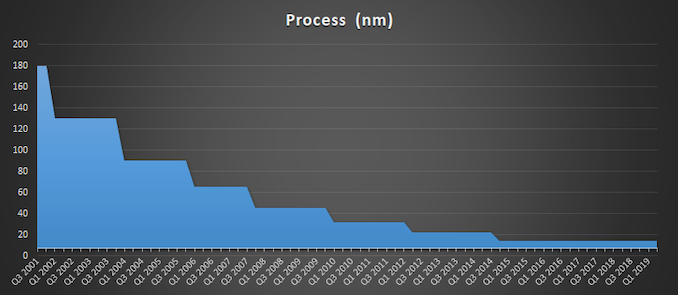
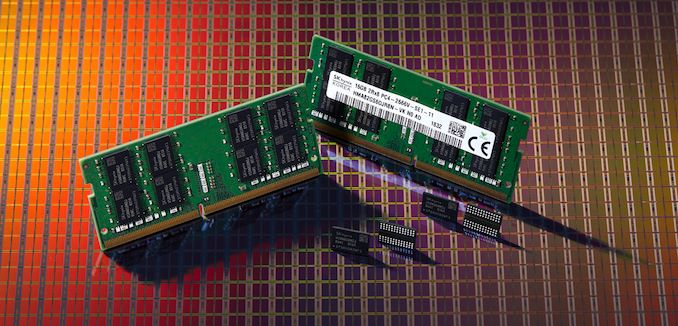

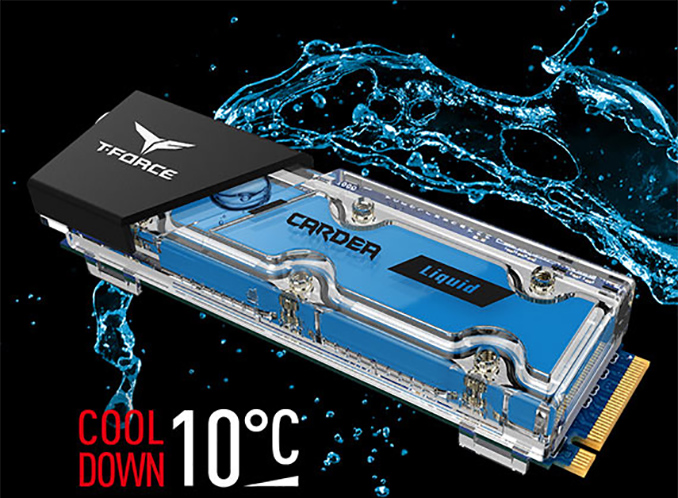
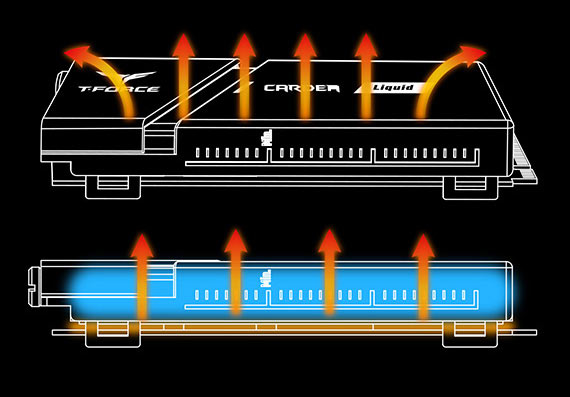

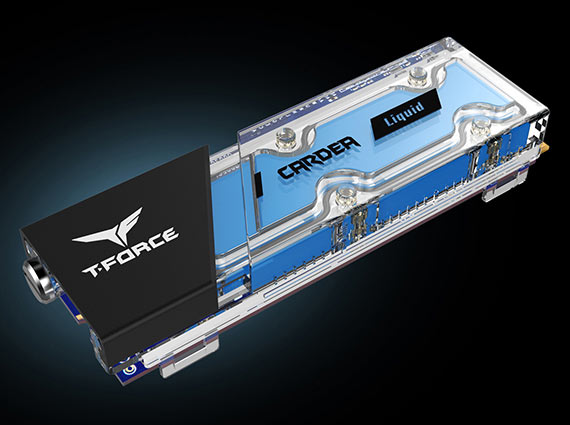
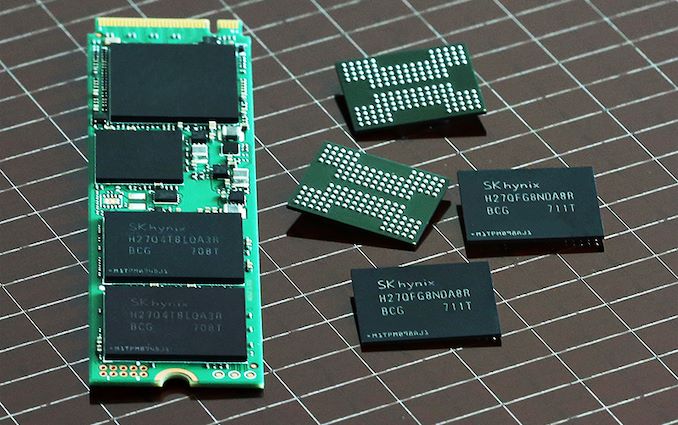
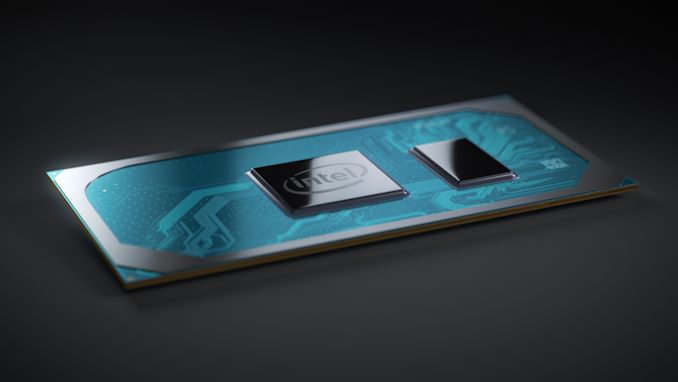
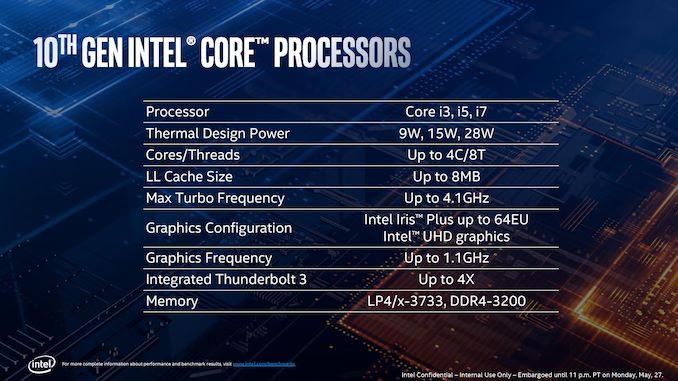
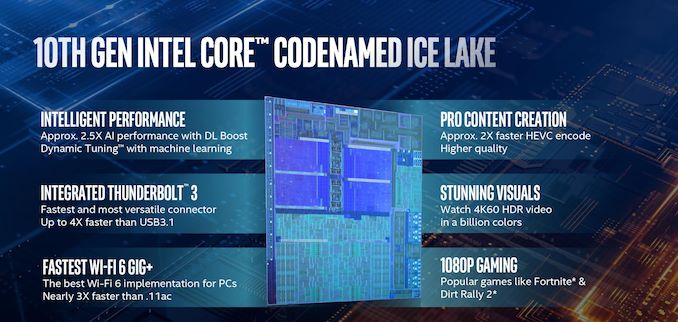
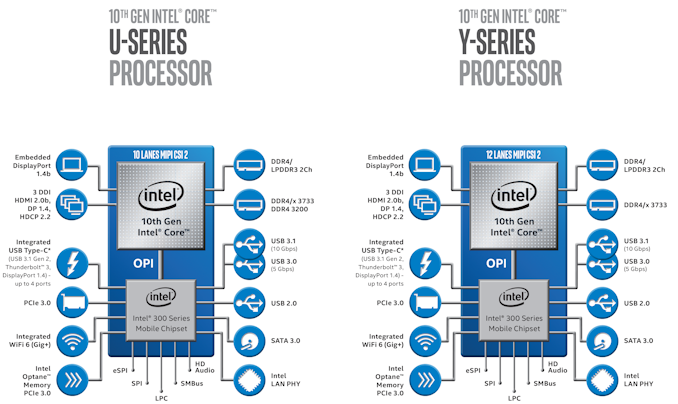



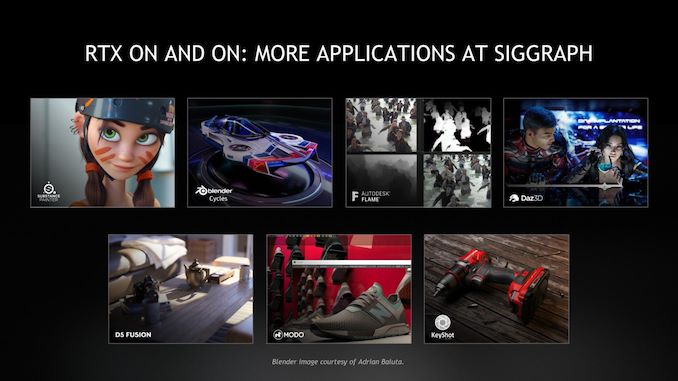
















Bookmarks